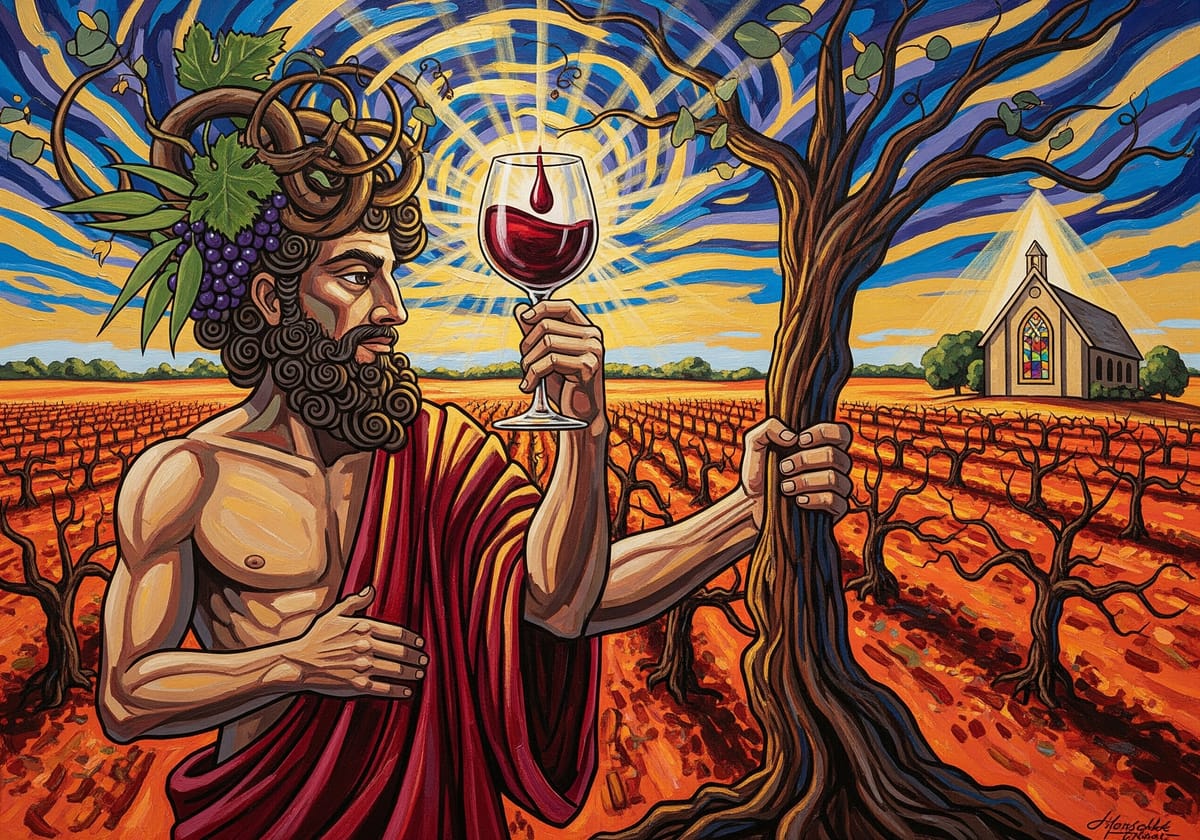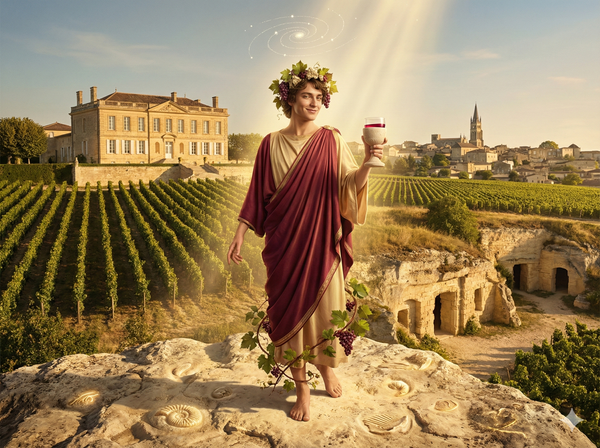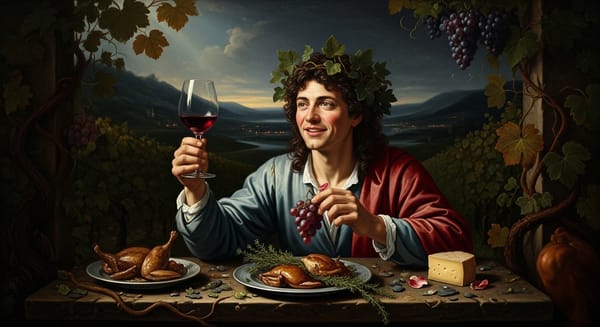“Eden’s Iron Fist: The Story of Henschke, the Shiraz That Preaches” From Prussian pioneers to global prestige—how one family turned a lonesome hill into holy ground.
Discover the full history of Henschke, one of Australia's most iconic wineries. From six generations of family stewardship to the legendary Hill of Grace vineyard, explore how Henschke built a global reputation for age-worthy Shiraz, precision viticulture, and timeless terroir.

I Don’t Care If You’ve Had Penfolds. This Is the One.
If Penfolds is the corporate anthem of Australian wine, then Henschke is the psalm.
You don’t stumble into a bottle of Henschke. You graduate to it—after you’ve drunk enough fruit bombs, built some cellar patience, and figured out that greatness doesn’t need to shout. Especially when it’s been whispering through six generations on a single goddamn hill.
This is the story of the Henschke family. Of Hill of Grace. Of a vineyard older than most nations, farmed by hands that knew exile, dirt, and destiny. And of wines that don’t beg for your approval—they wait for your reverence.
Let’s begin.
Where Did Henschke Come From—and Why Does It Matter?
Because before Barossa was a wine region, it was a refuge.
Johann Christian Henschke, a 24-year-old stonemason from Silesia, landed in South Australia in 1841. He was escaping Prussian religious persecution—and he brought his Lutheran grit and vine cuttings with him. By 1868, he’d planted the first vineyard in Keyneton. By 1868, he’d made his first vintage.
Fast forward five generations, and those same soils are now producing Hill of Grace—a Shiraz so hauntingly precise it makes Grange look like a muscle car in a suit.
This isn’t just a winemaking lineage. It’s a bloodline with purpose. The Henschkes are what happens when you mix Old World reverence with New World wildness—and refuse to sell out.
What Makes Hill of Grace a Global Icon?
Simple: it’s sacred land. Literally.
The vineyard sits in the Eden Valley, opposite a tiny Lutheran church called Gnadenberg—“Hill of Grace” in German. Planted in the 1860s, these vines are ungrafted, dry-farmed, pre-phylloxera Shiraz, some of the oldest on the planet still producing.
They grow in crumbly loam over red clay, sitting at 400+ meters elevation. Cool nights, long ripening, low yields. Every berry gets the full sermon.
But here’s the twist: the wine isn’t heavy. It’s not a sledgehammer. It’s perfume and iron. Rosemary and blood. Structure over sweetness. A whisper with weight.
If Grange is the emperor, Hill of Grace is the oracle.
Who Runs Henschke Today?
Stephen and Prue Henschke—fifth-generation custodians, married in both life and wine.
- Stephen: Winemaker. Thinks like a scientist, moves like a monk. Calm, precise, obsessed with balance.
- Prue: Viticulturist. Regenerative before it was cool. Biodynamic practices. Every vine knows her name.
Their children—Johann, Justine, and Andreas—are being groomed to continue the legacy, with Johann already stepping in as head winemaker. That’s six generations and counting. You can’t buy that kind of continuity. You have to earn it. With calluses.
What Other Wines Should You Know?
Hill of Grace gets the spotlight, but the Henschkes don’t just make one star—they run an entire constellation:
- Mount Edelstone Shiraz: Planted in 1912. Same DNA as Hill of Grace, different terroir. Black fruit, bay leaf, muscle and poise.
- Keyneton Euphonium: A symphonic blend of Shiraz, Cabernet, Merlot, and Cab Franc. This is the family band jamming with jazz hands.
- Cyril Henschke Cabernet Sauvignon: A tribute to Stephen’s dad. Age-worthy, firm, and quiet like a soldier’s journal.
- Peggy’s Hill Riesling: From Eden’s high slopes. Bone-dry, flinty, electric. This one zings.
They also experiment with Nebbiolo, Pinot Gris, and Grenache. But it’s the Shiraz and Riesling that anchor the soul.
How Did Henschke Go from Regional Hero to Global Cult?
Two words: They waited.
- They didn’t chase scores. They chased vineyard expression.
- They didn’t sell to multinationals. They stayed fiercely independent.
- They didn’t expand into every supermarket shelf. They protected scarcity like scripture.
Then, as critics woke up, the market followed. Hill of Grace started fetching $800+ a bottle. Back vintages vanished from cellars. Suddenly, Barossa had a new kind of royalty—less muscle, more grace.
Is Henschke an Investment-Grade Producer?
Yes. Unequivocally. Let’s lay it out:
- Scarcity: Hill of Grace production is tiny—often under 2,000 cases a year.
- Heritage: 150+ years, uninterrupted, same family, same land.
- Ageability: Hill of Grace can go 30+ years. Mount Edelstone too.
- Critical Acclaim: Regular 95+ scores. Langton’s “Exceptional” tier. Jancis loves them.
- Cultural Weight: It’s Australia’s DRC—but with Lutheran work ethic and less flex.
If you’re collecting with intent, Henschke isn’t optional. It’s foundational.
Frequently Asked Questions about Henschke
Why is Hill of Grace so expensive?
Because it’s from one vineyard, planted in the 1860s, farmed by hand, and made in microscopic quantities. Scarcity meets perfection.
Is Henschke organic or biodynamic?
Not certified, but practices are regenerative, biodynamic-influenced, and deeply sustainable—thanks to Prue Henschke’s philosophy.
How does Hill of Grace compare to Penfolds Grange?
Grange is a blend. HOG is single-vineyard. Grange is power. HOG is precision. One roars. One whispers.
Can I visit Henschke?
Yes, but it’s by appointment and intimate. You’re not walking into a tasting bar—you’re entering a family’s cathedral.
What’s the best vintage of Hill of Grace?
2002, 2005, 2010, 2012, 2015, 2018. But don’t sleep on older ones if stored well—they age like scripture.
Final Benediction?
Henschke didn’t build a brand. They built a shrine.
Where other wines shout, theirs resonate. Where others age, theirs evolve. And where others flex, theirs stand still—quiet, unwavering, waiting for you to finally catch up.
So next time someone tells you Australia’s all jammy Shiraz, pour them a glass of Hill of Grace… and then say nothing.
The wine will do the talking.





